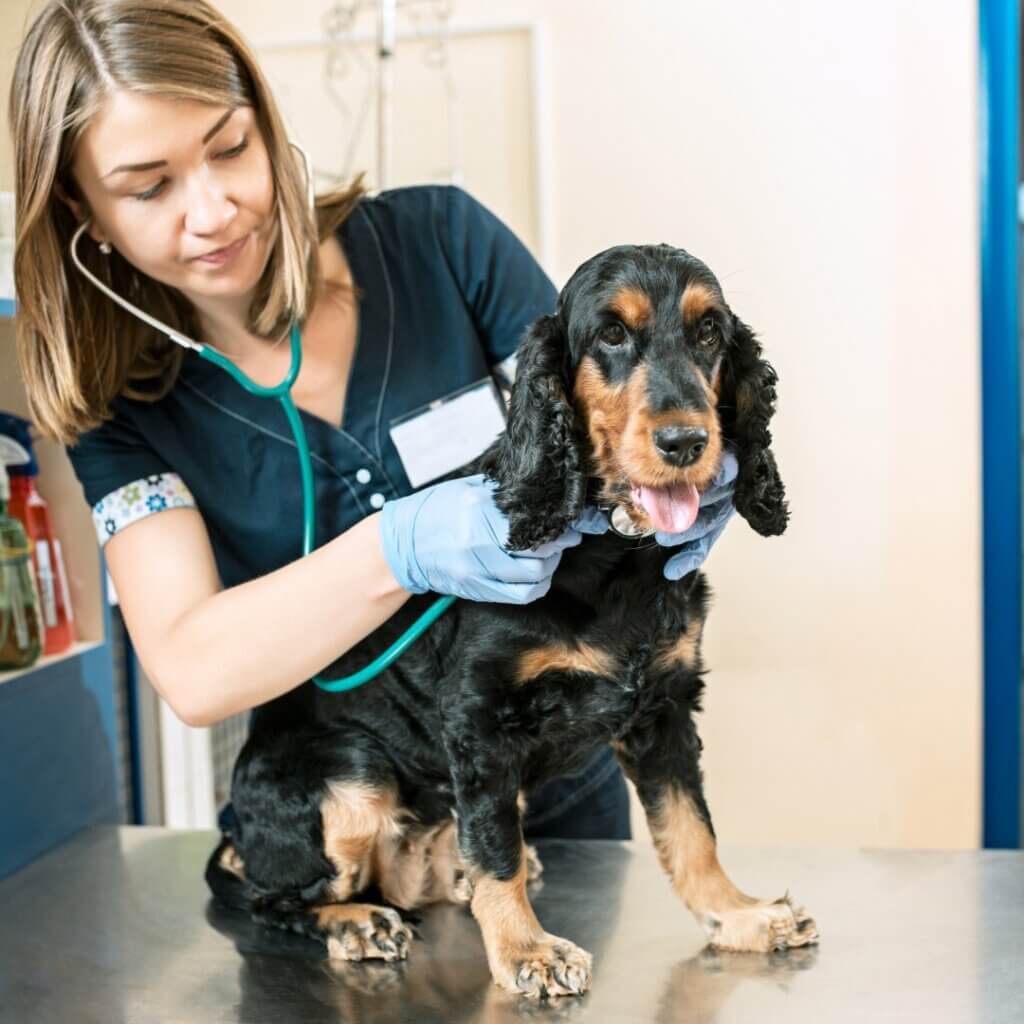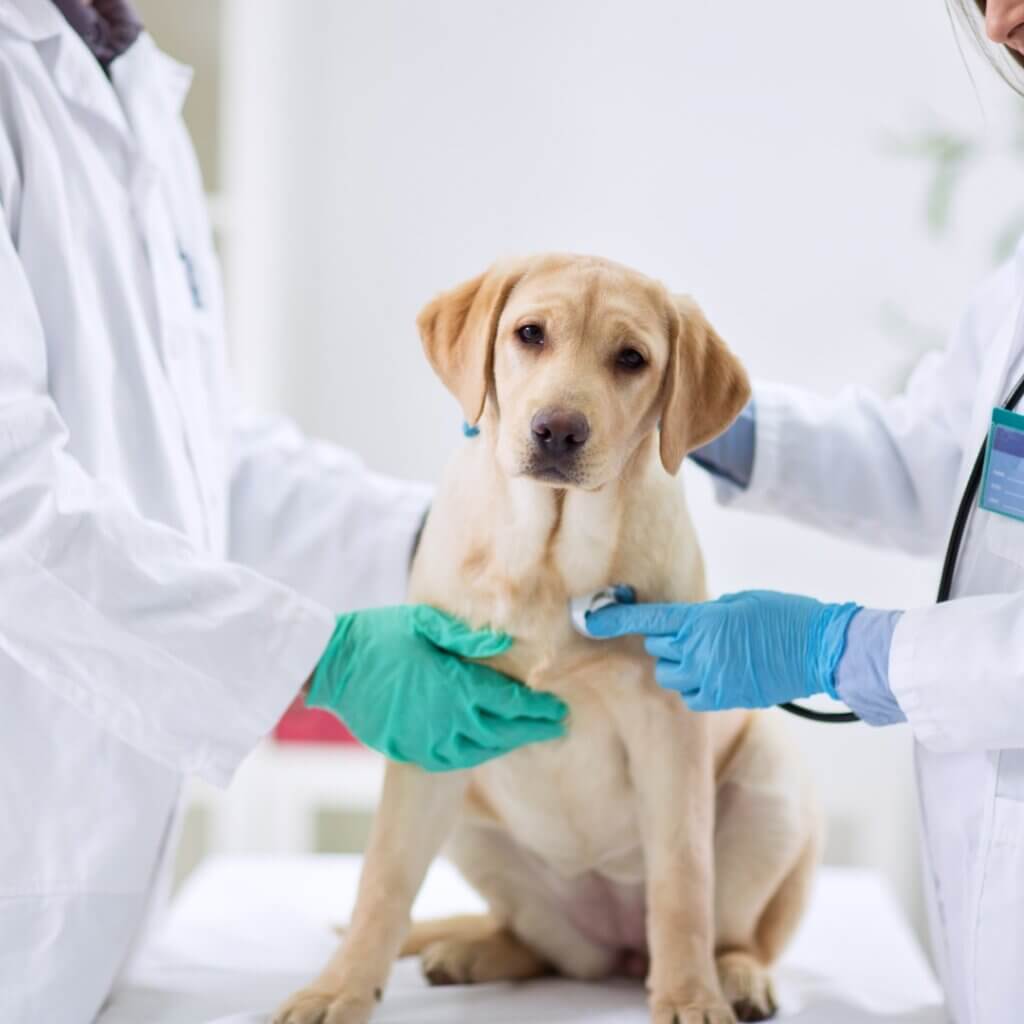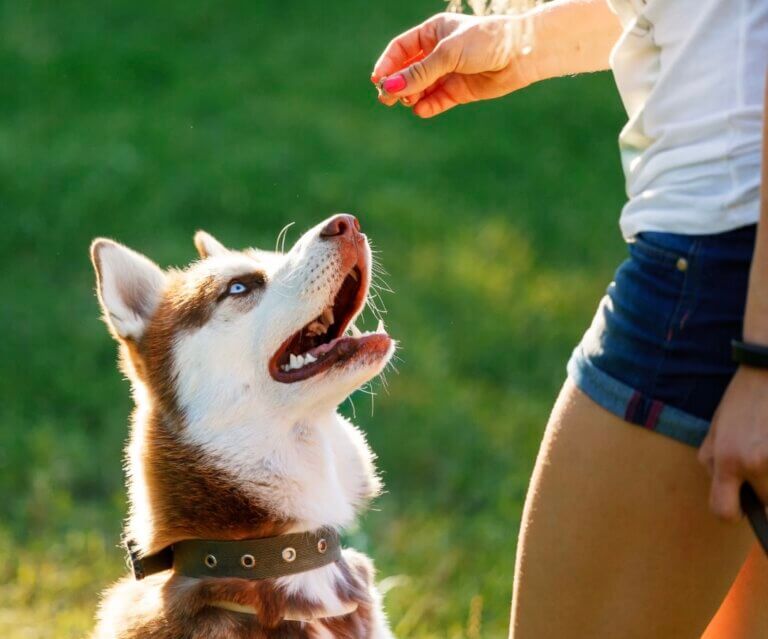
Ah, the dreaded vet visit. Just like us humans, most of us would rather be anywhere else but the doctors! We are feeling unwell, out of sorts and possibly experiencing pain along with associations of being poked and prodded in previous visits. A lot of our dogs are no different, and paired with behavioural issues, poor obedience and prior learning, vet visits can very quickly become incredibly stressful for both dog and owner.
As professional dog trainer, I frequently help owners and their dogs to overcome issues in relation to vet visits and if you are reading this blog, it is likely that you and your pooch are in need of some help and guidance in order to have a stress free trip to the vets.
Manual handling
Many of us will have experienced a time where we have placed our hands on our dogs or puppies in order to apply medication, ear drops, clip their nails etc and what we hoped would be a straight forward experience, turns into something which resembles Steve Irwin wrestling a crocodile while you hold onto them for dear life. What if I told you there is absolutely another way to go about this and prepare your dog for a much more stress free experience?
So first of all, lets dive straight in and discuss the absolutely invaluable skill which is, manual handling.
Manual handling training is possibly one of the skills that owners practice the least with their dogs and in reality, it really is something we should be spending quite a bit of time on with our dogs. Manual handling is where guide our dogs and puppies into various positions and is generally done without the use of food.
It teaches our dogs how to respond to appropriately dosed levels of stress, because remember, stress isn’t something that we can or should necessarily avoid all together in dog training. In this circumstance, we are teaching our dogs that they should relax when being handled rather than struggling, thrashing or fighting their way out of a potentially stressful situation. What this results in is then an overall reduction of stress and in turn, a much more pleasant experience for all involved.
Lets take a dog getting their annual vaccinations or routine blood work as an example. This isn’t a particularly enjoyable experience for our dogs, however it is something which is likely to occur throughout our dogs life and therefore, it is a necessary experience for them to go through. Therefore it is important that we teach our dogs that by standing calmly during this procedure without struggling or fighting, the experience will be over a lot faster and with minimal additional stressors to the patient, vet and owner.
Muzzle training
Introducing your dog to wearing a muzzle is a skill which I believe every dog should learn. ‘But Abi, my dog isn’t aggressive so why does he need to wear one??” I hear you ask. Great question, I’d love to tell you.
When dogs experience high levels of pain, for example if they were to be hit by a car, it can be unknown just how they will respond in these situations to the people who are simply trying to help them. In a lot of cases, vets would choose to muzzle patients to prevent injury to themselves or others during the efforts to provide medical attention. For a dog who has never worn a muzzle before, this can add to the stress of the situation, which of course is something we would like to avoid.
Now perhaps your dog does find vet visits stressful already. Perhaps they are unsure or fearful of strangers, or are aggressive towards other animals or humans. In order to keep everyone safe, taking the time to teach your dog to enjoy (or just tolerate!) wearing a muzzle is imperative. When your dog is muzzled, it ensures the safety of your vet should your pet become stressed enough to attempt to bite. A lot of the time, our vets and vet nurses are working up close and personal to provide the best care possible for our animals, and keeping them safe should be a top priority.
Muzzle training can be done easily at home by purchasing an appropriately sized muzzle, and teaching your dog to be comfortable putting their nose in whilst feeding treats through the holes. You could even try smearing peanut butter or yoghurt on the inside to encourage them to spend more time with their noses in the muzzle. From here, work your way up to putting the straps over their head, and increasing the duration that they are wearing the muzzle. Just 5 minutes twice a day built up over time, and your dog will be well on its way to feeling comfortable wearing their muzzle
Drop in visits

Rather than waiting for your puppy or dog to get sick before heading to the vets, I really recommend organising pop in visits. These visits can be used as opportunities to build relationships with the vets and vet nurses through pats and treats, confidence building experiences for the nervous pup, or simply practising hopping on and off the weighing scales which is even more important if your pet is on a weight loss journey.
The idea behind these visits are to build more positive associations with the location and the people in charge of handling and treating your dog when they are unwell. It helps to make the vet clinic become more familiar to your dog and over time, help reduce any additional stress that your pet may be feeling when they have to visit in the future.
Most vets are thrilled to hear their patients would like to come by to visit as part of a training program and in order for their dog to feel more comfortable in the long run. I do suggest to call ahead and let them know you will be popping by to avoid peak times and busy waiting rooms in the early stages of training. This way the vet nurses will be able to advise the best time to visit where they may be able to help out in any training as needed.
Solid obedience
Having rock solid obedience commands which are proofed in lots of different environments can be incredibly helpful in order to have a stress free vet visit. Just imagine how nice it would be to have a dog who waits at the door with their owner, walks politely on leash by their side, hops onto the scales with no fuss and lays patiently by their feet while waiting for their turn to see the vet.
Typically this can be a far cry from what actually happens at the clinic! Dogs pulling their owners arms out of their sockets as they barge through the door, the echo of “Fido sit, siiiiit, sit, SIT!” can be heard as a stressed out pet parent desperately tries to keep their dog still on the scales, or perhaps their dog is barking at every dog or person that walks past in the waiting room?
First of all, we must teach our dogs these behaviours away from the vet clinic. Then, when they have practised in lots of different environments with many distractions, you can then introduce the same commands at the vets. This is another great opportunity to practice while at your drop in visits as mentioned above.
My top 5 essential commands to teach your puppy for a successful and stress free vet visit would be:
- Solid loose leash walk around distractions (including people and other dogs in close proximity)
- Duration down stay which is perfect for waiting your turn to head in for your appointment or when checking in/out at the reception desk.
- Teaching your dog to put all 4 paws on an object and stay there. This is important for a quick and easy experience when weighing your dog.
- Manual handling as mentioned earlier in the blog.
- Waiting patiently before and after doors. This helps to create a calm mindset and ensure your dog is switched on and listening to commands before entering.
Call ahead for quiet times
If your dog currently finds vet visits stressful (perhaps you do too!), they are dealing with behavioural issues such as dog or human aggression, or you would prefer a quieter environment with less distractions for your puppy who is in training a great option to help with this would be to call ahead and chat with the vet staff and you will generally be able to ask when the quieter times are to book in your pets appointment.
In addition to this, a lot of vet clinics have options to book a double appointment in order to give you more time with the vet to chat about your pets needs and help them settle in without being pushed to fit within a 10 minute time slot. Along with drop in visits, this is a great way for your dog to build a relationship with their regular vet and take things a little slower for those who need it.
Other options which may be available are separate entrances and exits as well as separate waiting areas or empty consultation rooms for reactive, aggressive or fearful dogs in order to minimise their stress levels. Although these techniques are fantastic to help manage the environment in a way to set your puppy or dog up for success, it is also important to understand that working with a professional trainer in order to address the route cause of the behavioural issues is something that should not be overlooked.
Start early and socialise appropriately
Like most things, prevention is better than the cure. If you are bringing home a new puppy, I would highly advise to begin exposing them to the vet clinic in the form of drop in visits and general wellness checks.
Take some of your pups fave treats (we like Prime 100 and Bugsys air dried treats!) and head on down to the clinic. Practice your basic commands, getting them used to hopping up onto the scales, and meet and greet the vet staff. In this scenario, we are trying to create positive associations with the clinic as well as exposing our puppy to sights, smells, sounds and surfaces that they will encounter throughout their life. Proper socialisation is so important in order for your puppy to develop into a well rounded, confident and happy adult and should be a priority for any new puppy owner.
You can also practice a lot of the essential skills needed for stress free vet visits such as confidence building, paw targeting, loose leash walking, and manual handling without ever stepping a paw into the vet clinic which means there really is no excuse!
Taking the time to put in the effort while your pup is young and building their confidence in these environments will pay off in the long run and will mean that trips to the vets are a breeze!
In conclusion, it is safe to say that no one likes it when their pets get sick, after all, they are part of our family and it is only natural to feel worried when they aren’t feeling themselves.
However, as described in this blog, there are many ways that you can help improve both yours and your dogs experience at the vets. Just like when we teach any new skill to our dogs, these things take time, patience and understanding however it is definitely worth putting in the effort in order to reduce stress in what is more than likely, an already stressful experience for you both.
Need more advice? Book in with one of our experienced trainers for a dog training plan tailored to you and your dog.
Would you like to book in but are out of our service area? Pk9 online is for you! Full to the brim of useful videos to guide you from basic puppy training to more advanced skills and full access to online support from our team of experienced trainers.
